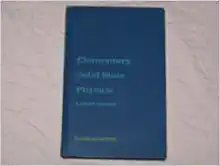Question
1. Climatologists can determine the past temperature of the earth by comparing the ratio of the isotope oxygen-18 to the isotope oxygen-16 in air trapped
1. Climatologists can determine the past temperature of the earth by comparing the ratio of the isotope oxygen-18 to the isotope oxygen-16 in air trapped in ancient ice sheets, such as those in Greenland. In one method for separating these isotopes, a sample containing both of them is first singly ionized and then accelerated from rest through a potential difference V. This beam then enters a magnetic field B at right angles to the field and is bent into a semi-circle. A particle detector at the end of the path measures the amount of each isotope. Given that the measured masses of the two isotopes are 2.66 x 10-26 kg ( 16O) and 2.99 x 10-26 kg ( 18O) and the magnetic field is 0.050 T, what must be the accelerating potential V so that these two isotopes will be separated by 4.00 cm at the detector?
2. One electron collides elastically with a second electron initially at rest. After the collision, the radii of their trajectories are 1.00 cm and 2.40 cm. The trajectories are perpendicular to a uniform magnetic field of magnitude 0.0440 T. Determine the energy of the incident electron.
Step by Step Solution
There are 3 Steps involved in it
Step: 1

Get Instant Access to Expert-Tailored Solutions
See step-by-step solutions with expert insights and AI powered tools for academic success
Step: 2

Step: 3

Ace Your Homework with AI
Get the answers you need in no time with our AI-driven, step-by-step assistance
Get Started


